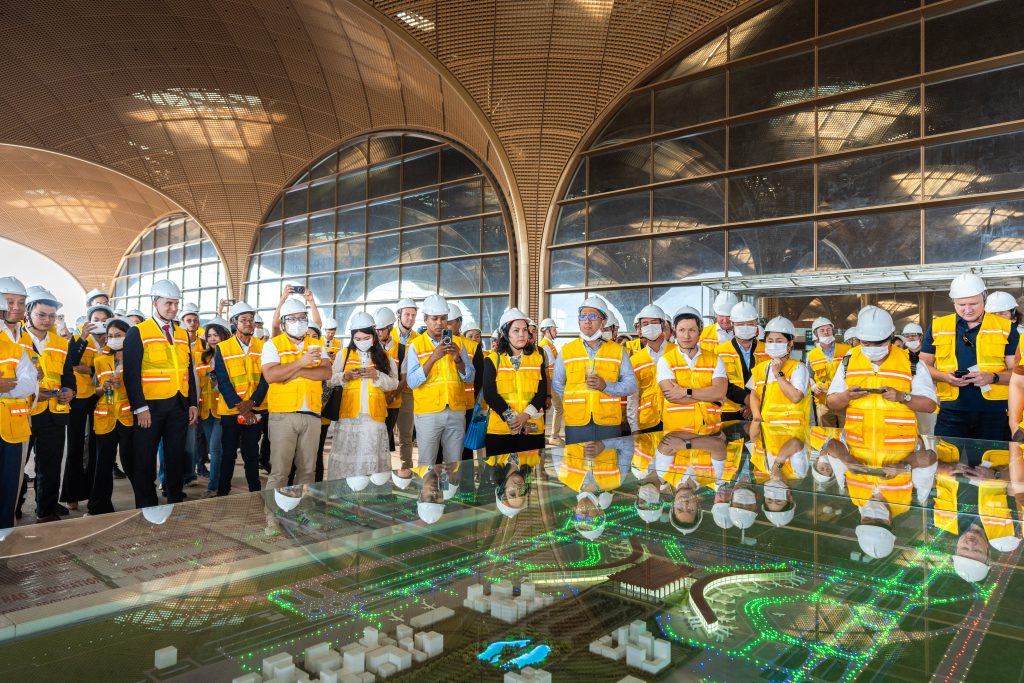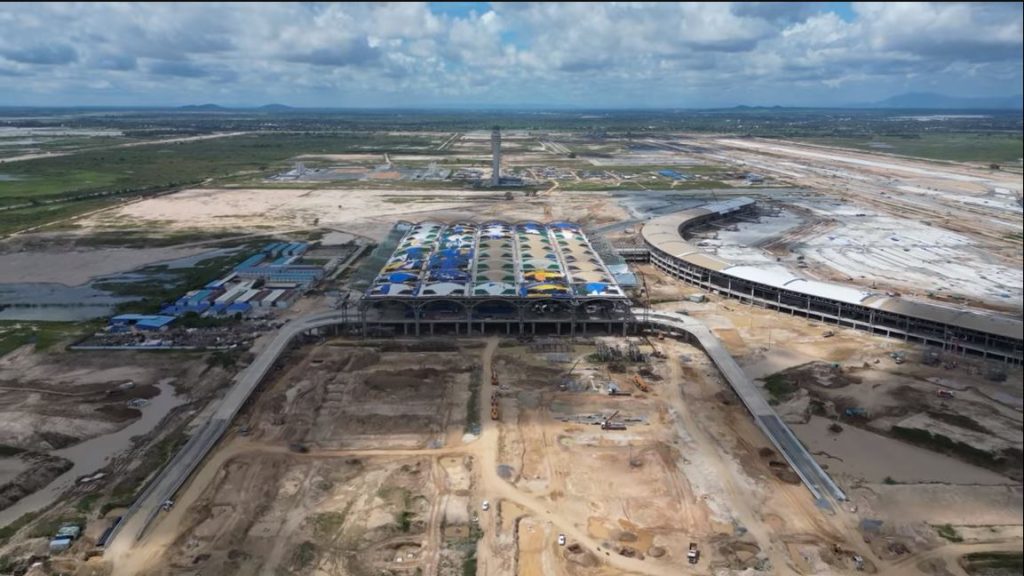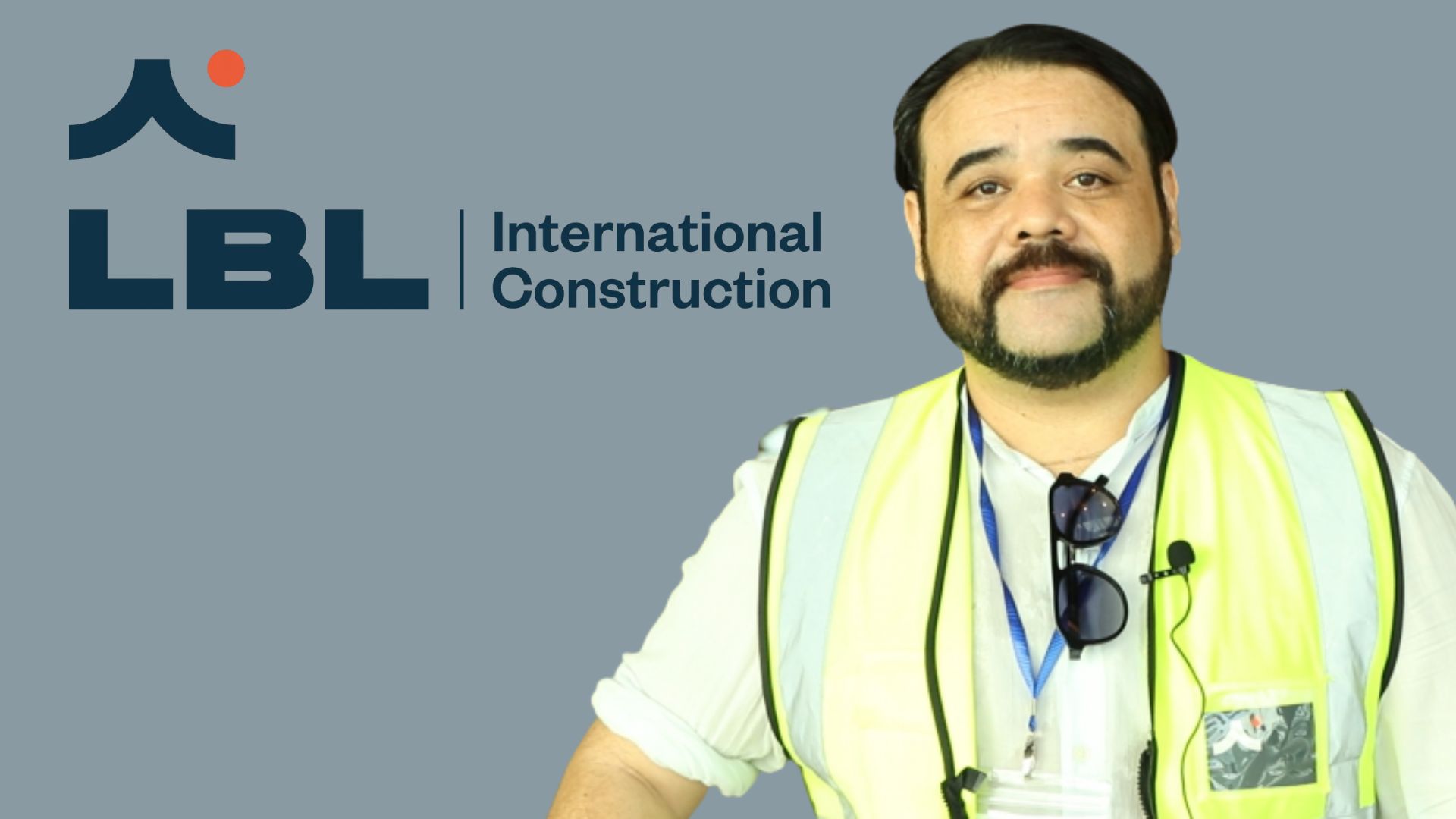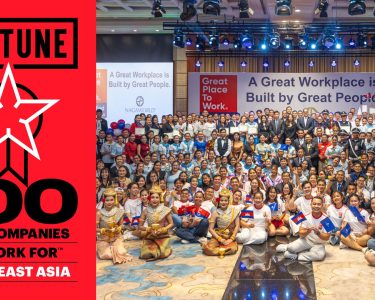Stew Post
EuroCham Communications team headed out to the new Techo International Airport, where Senior Communications Officer Stew Post spoke with Jérôme Luciani-Khao, Deputy Director at LBL International Construction.
With over three decades of experience in Cambodia’s construction industry, Jérôme shared how LBL has grown alongside the country’s rapid development, delivering some of its most iconic projects. Their conversation touched on the firm’s early beginnings, its role in landmark developments such as the Techo International Airport, and how LBL is adapting to shifts in the real estate market while maintaining its commitment to quality and local talent development.
Stew: LBL has been active in Cambodia since 1991, making it one of the earliest international construction firms in the country. Can you tell us how the firm got started and what the main challenges and opportunities were in those early years?
Jérôme: Our history is very much linked to the history of Cambodia itself. LBL was launched in 1991 as a French-Cambodian company, with the ambition to bring international standards to construction and to contribute directly to the development of the country. From the very beginning, our mission was to demonstrate that a local company can perform construction to the highest quality standards.
Looking back, more than three decades later, we can say that we have succeeded in that mission. What started as a family company has grown into one of the leaders of the sector. Over 35 years of existence, we have completed more than 500 projects, including some of the most iconic buildings in the country.
Because our company’s story is tied to Cambodia’s development, our portfolio has evolved alongside the nation. In the early years, as the country opened up and began to welcome tourists and investors, we focused heavily on hotels and infrastructure projects that were vital to supporting growth. Later, as Cambodia became more urbanised and economically advanced, we delivered major residential complexes, office towers, and high-rise projects that shaped the skyline of Phnom Penh and beyond.
Of course, just as Cambodia has faced challenges, so too has LBL. Periods such as the global financial crisis, the COVID-19 pandemic, and now the border conflict with Thailand, have all had a direct impact on the industry and, naturally, on our company. But each challenge also reinforced our resilience, and the key is to adapt as we always did.
Stew: Over the past three decades, LBL has worked on some of Cambodia’s most iconic and high-end projects. Which projects (besides the new airport) stand out to you as milestones in shaping both the company’s reputation and the country’s construction landscape?
Jérôme: Over the past three decades, we’ve had the privilege of contributing to some of Cambodia’s most iconic projects across all sectors. For infrastructure, one of our early milestones was delivering the country’s very first fiber optic network with Alcatel in the 1990s, and since 1996 we’ve worked on more than a dozen airport projects. In hospitality, we’ve partnered with leading international groups, from Park Hyatt and Aman La Villa Princière to more recent projects with the Accor Group for Tribe and Novotel.
Read More: Techo International Airport Hosts French Ambassador and Business Delegation
In education and charity, we’re proud of our award-winning Jay Pritzker Academy and the largest international school campus at ISPP. On the commercial side, we’ve delivered for prestigious clients like LVMH with the DFS T Galleria in SR or the iconic Exchange Square for the client Hong Kong Land. More recently, we designed and built the country’s first giant aquarium and zoo, AAK, opening new avenues for leisure and entertainment.
Since COVID, we’ve also seen a strong demand for high-end villas, and we’ve become a trusted partner for clients who value quality and long-term collaboration. For us, the common thread across all these projects is the willingness of the client to have the best quality work and to partner with a reliable and expert construction company.

Stew: LBL is widely recognised for its commitment to quality and professionalism. How do you ensure these high standards are maintained across such diverse and complex projects?
Jérôme: At LBL, maintaining the highest standards begins with strong organisation. The key for us is that we have internalised all the professional disciplines related to design and construction. We place experienced and loyal experts at every level of management, and all juniors benefit from each other. From there, we ensure rigorous supervision at every stage and seamless coordination across all professional disciplines.
Our long experience in this market has also allowed us to identify and build relationships with the most reliable subcontractors, partners whose quality and professionalism we can fully trust. Finally, all of this is reinforced by continuous support and follow-up from our headquarters. This combination of leadership, supervision, trusted partnerships, and organisational backing is what enables us to deliver the best.
Developing human resources is central to LBL’s strategy, with a focus on training and promoting Cambodian talent.
Stew: Turning to the soon-to-open Techo International Airport, LBL was tasked with one of the most defining characteristics of the structure: the grand arched ceilings. In the planning and construction of the project, what were the key challenges that you encountered? How did you effectively manage and overcome these issues?
Jérôme: For the airport, our scope of work was the design and build of the soffit ceiling and column cladding — essentially all of the visible decorative elements that make the terminal unique. The first big challenge came right at the start: the design provided by the master architect, Foster + Partners, was only halfway complete when we joined. We had to find a solution that was not only faithful to the architect’s vision but also technically buildable, durable, and achievable within the extremely tight timeline of just one year.
Another challenge was the complexity of the site itself: some ceilings were more than 42 meters high, and our work covered around 200,000 square meters. At the tender stage alone, we spent a whole year developing and validating technical solutions, gaining the trust of the client, the international consultant, and the architect. Being selected over other international companies was already a significant achievement.
Once on site, the real test was execution. We had to coordinate with the main contractor, the project management company, the client, and the architect — while ensuring that production, logistics, manpower, installation, and delivery were all perfectly aligned. In total, we assembled over 600,000 individual pieces into 26,000 panels, representing more than 1,200 tons of ceilings installed. Thanks to precise planning and close collaboration with all stakeholders, we completed on schedule and enabled the client to move forward with the next phases of the project. For us, this project demonstrated our ability to combine technical innovation, rigorous project management, and trusted partnerships through a really expert and competent technical and project management team.
Stew: In the broader real estate sector, the boom of the past decade has slowed, with the commercial market nearing saturation. What is LBL’s strategy in the coming years to stay productive in the face of this slowdown?
Jérôme: The real estate boom has indeed slowed since COVID, and the market has not yet fully recovered. For us, the key has been adaptation. In early 2023, we launched Wise by LBL, our Architecture and Engineering arm, which offers a full 360-degree preconstruction service — from architecture, structural, and MEP design to budgeting. It has been a real success: in just over a year, we have completed more than 50 projects, worked with prestigious clients, delivered successful commercial developments, and even received awards for our work.
On the construction side, we have also diversified. While in the past we didn’t focus on private villas, we’ve seen a growing demand for them, especially at the high end, where clients expect impeccable quality and finishing. Over the last few years, we’ve delivered a dozen such villa projects, which has strengthened our reputation in this segment.
More recently, we’ve noticed international clients returning to Cambodia, and their main interest has been in refurbishing existing buildings to bring them up to brand standards, particularly for hotels and serviced apartments. And although there are fewer new developments than in the past, the projects that do move forward are significantly larger in scale. The new international airport is the best example of this. That’s why our strategy now is to position LBL for these larger, more complex projects, while continuing to deliver quality and innovation across all segments. This adaptability is what will keep us productive and relevant in the years ahead.

Stew: What are your hopes for the future of the real estate and construction sector? Are there any regulatory developments or emerging trends that you think could hold promise for the sector?
Jérôme: Our hope for the future of Cambodia’s real estate and construction sector is that clients will start demanding higher standards in their projects. When developers push for quality, it drives the whole industry to create developments that bring real and lasting value where contractors can bring real expertise.
But it’s not only about what clients want — regulation also plays a big role. There’s still progress to be made when it comes to safety compliance on site and worker protection. Beyond regulation, a stable and supportive business climate is also crucial, as a predictable and professional environment encourages companies to invest, innovate, and create more opportunities for Cambodia.
Another key factor is making sure local companies become more competitive. Too often, projects awarded to regional firms might look cheaper at first, but the quality ends up being low, and most of the supply chain benefits leave Cambodia. By helping local companies build capacity and efficiency, we can make sure that more of the value generated by construction stays in the country — creating jobs, expertise, and experience.
So, I see the sector’s future depending on two things: stronger standards and a healthier business climate, and a stronger local industry able to compete on both quality and value. If we can achieve that balance, the Cambodian construction sector will be in a very strong position moving forward.
Stew: As Cambodia’s economy continues to grow, what trends or opportunities do you see shaping the next chapter of the construction and development industry—and how is LBL positioning itself for that future?
Jérôme: Cambodia’s economy is entering a new phase where investment is increasingly focused on large-scale infrastructure projects—a clear sign of the country’s development. At the same time, when we look specifically at building projects, the trend we have observed—and believe will continue—is that there will be fewer projects overall. Still, those that do move forward will be larger in scale, more complex, and more architecturally distinctive.
A great example is the TIA project, which involves internationally renowned architects and consultants, and represents a size and level of sophistication that was rarely seen before in this sector. Successfully delivering these kinds of projects requires not only a strong and highly competent engineering team, but also significant resources on the construction side.
At LBL, we have been preparing for this evolution by strengthening our engineering expertise, working with top consultants, and investing in the resources necessary to manage and execute ambitious, high-quality developments. We are ready for the next chapter.





